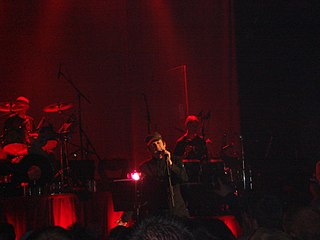
The Beautiful South were an English pop rock group formed in 1988 by Paul Heaton and Dave Hemingway, two former members of the Hull group The Housemartins, both of whom performed lead and backing vocals. Other members throughout the band's existence were former Housemartins roadie Sean Welch (bass), Dave Stead (drums) and Dave Rotheray (guitar). The band's original material was written by the team of Heaton and Rotheray.

Paul David Heaton is an English singer-songwriter. He was the frontman of the Housemartins, who had success with the singles "Happy Hour" and the UK number one "Caravan of Love" in 1986 before disbanding in 1988. He then formed the Beautiful South, whose debut single and album were released in 1989 to commercial success. They had a series of hits throughout the 1990s, including the number-one single "A Little Time". They disbanded in 2007. He subsequently pursued a solo career, which produced three albums, and in 2014 he released What Have We Become?, a collaboration with former Beautiful South vocalist Jacqui Abbott. He recorded three more albums with her: Wisdom, Laughter and Lines in 2015, Crooked Calypso in 2017, and Manchester Calling in 2020.

The Housemartins were an English indie rock group formed in Hull who were active in the 1980s, and charted three top ten albums and six top twenty singles in the UK. Many of their lyrics were a mixture of socialist politics and Christianity, reflecting the beliefs of the band. The group's a cappella cover version of "Caravan of Love" was a UK Number 1 single in December 1986.
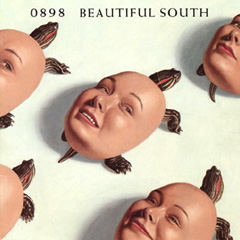
0898 Beautiful South, also referred to as 0898, is the third studio album by English band The Beautiful South. After the success of their previous work over 1989–1991, the band hired prolific record producer Jon Kelly and recorded the album at AIR Studios in London. The album contains a more "muscular" yet sometimes more sombre sound than their previous albums, although still entirely retains lyricist Paul Heaton's witty and bitter lyrical style. The album "deals in fragile melodies and harmonies, soulful but low-key instrumentation, and lyrics full of subtle social commentary and humour." The album title refers to the 0898 premium rate dialling code associated with sex hotlines in the UK at the time.

Miaow is the fourth album by The Beautiful South. It was released in 1994 via GO! Discs.

Carry on up the Charts: The Best of The Beautiful South is an album by English Alternative rock band The Beautiful South. It is the group's fifth album and their first greatest hits collection. It was a major commercial success, reaching number one in the UK Albums Chart and going on to become the second biggest selling album of 1994.
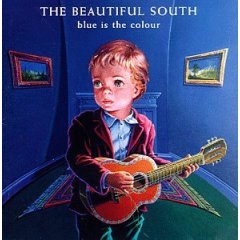
Blue Is the Colour is the fifth studio album from English band The Beautiful South, released in October 1996 through Go! Discs and in America through Ark 21 Records. The album was released following the two singles "Pretenders to the Throne" and "Dream a Little Dream", which never featured on any album until the release of the second greatest hits Solid Bronze in 2001.
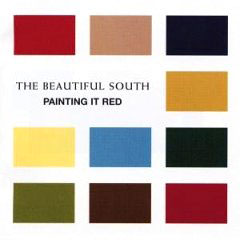
Painting It Red is the seventh album by The Beautiful South, released in 2000. A concept album about impending middle age, Painting it Red is among the band's longest. A two-disc UK bonus version contains 20 tracks. The American release on Ark21 has only 17 tracks.

Solid Bronze: Great Hits is The Beautiful South's ninth album and second greatest hits compilation. It was released in November 2001 and contains 19 tracks. The album contains two songs that were released between Carry on up the Charts and Blue Is the Colour, and never made it onto any album.

Doll Revolution is the fourth studio album by American pop rock band the Bangles. It was released in March 2003 in Europe and Japan, and in September of that year in the United States. It is the first album by the group since their 1998 reunion.

"How Long's a Tear Take to Dry?" is a single by British pop rock group the Beautiful South from their sixth album, Quench (1998). It was written by Paul Heaton and Dave Rotheray. The lyrics, which take the form of a conversation between two reconciling lovers, are noted for a reference to the TARDIS from Doctor Who. According to the book Last Orders at the Liars Bar: the Official Story of the Beautiful South, "How Long's a Tear Take To Dry?" was originally to be called "She Bangs the Buns" due to its chord structure reminiscent of Manchester's the Stone Roses. The song reached number 12 on the UK Singles Chart, becoming the band's twelfth and final top-twenty hit.
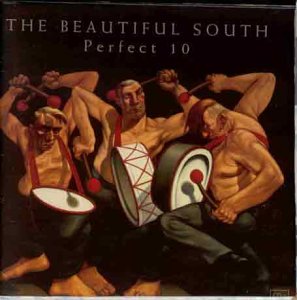
"Perfect 10" is a song by English pop rock band the Beautiful South, released on 21 September 1998 as the first single from their sixth studio album, Quench (1998). It debuted at number two on the UK Singles Chart, selling 89,000 copies during its first week of release, and is the band's last UK top-10 single to date. It received a platinum certification from the British Phonographic Industry in 2021 for sales and streams exceeding 600,000 units.

Jacqueline Abbott is an English singer who was a vocalist with the band The Beautiful South from 1994 to 2000, following the departure of Briana Corrigan.
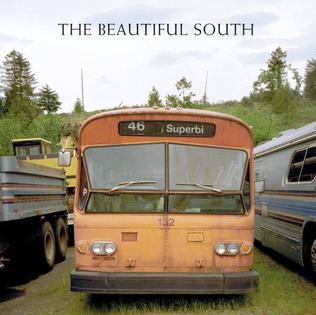
Superbi is the tenth and final album by the British group The Beautiful South, released on 15 May 2006 by SonyBMG. The album entered the British chart at No. 6 before dropping to No. 20 and No. 37 in its second and third weeks respectively. It was released before their split on 30 January 2007. The album was produced by the former Tears for Fears keyboard player Ian Stanley.

"Song 4 Lovers" is a song by English-Irish pop band Liberty X, released as the lead single from their third studio album, X (2005). The single was released on 26 September 2005. The song features uncredited vocals from American rapper and member of Run-D.M.C., Rev Run. It was the band's first and only gospel-orientated song, and was produced by band member Tony Lundon. The single peaked at No. 5 on the UK Singles Chart, becoming the band's highest charting single from the album.
Alison Wheeler is a British singer, best known as the female vocalist for The Beautiful South from 2003 until they disbanded in 2007.
"When A Child Is Born" is a popular Christmas song. The original melody was "Soleado", a tune from 1974 by Ciro Dammicco, composer for Italy's Daniel Sentacruz Ensemble, and Dario Baldan Bembo. The tune was based on Damicco's earlier tune "Le rose blu" published in 1972. The English language lyrics were written a few years later by Fred Jay. They do not make specific mention of Christmas. Fred Jay's lyrics have been sung by many artists, first version by Michael Holm in 1974 but most successfully by Johnny Mathis in 1976, whose version was the Christmas number one of that year in the UK.
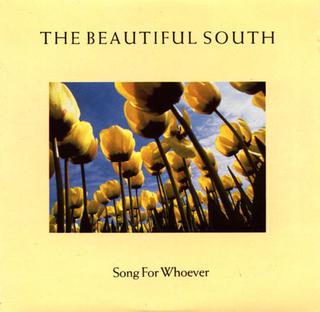
"Song for Whoever" is a song by English music group the Beautiful South, written by band members Paul Heaton and David Rotheray. The first and highest-charting single from their debut album, Welcome to the Beautiful South, it peaked at number two on the UK Singles Chart in July 1989 and was certified Silver by the British Phonographic Industry. Considered typical of the band's gently subversive, self-reflexive signature style, it is sung from the point of view of a cynical songwriter who romances women solely to get material for love songs.

Soup is an album released in November 2007 by The Housemartins and The Beautiful South on Mercury Records. It is in effect a greatest hits album for both of the bands, the first seven tracks bracketed together as "The Housemartins Condensed" and the remaining fifteen as "The Cream of The Beautiful South". All twenty-two songs were released as singles by the bands, and the track listing runs in chronological order by year of song release from 1985's "Flag Day" to 2003's "Just A Few Things That I Ain't". An associated DVD of the bands' music videos was also released.

"Stand" is a song recorded by American band Poison, written by Richie Kotzen prior to joining the band. It was the first single from their 1993 album Native Tongue. The song reached number 15 on the Mainstream rock chart, #35 on the top 40 mainstream chart and #50 on the Billboard Hot 100. The song also charted at number 25 on the UK Singles chart, it was also the first Poison single and music video to feature lead guitarist Richie Kotzen.


















